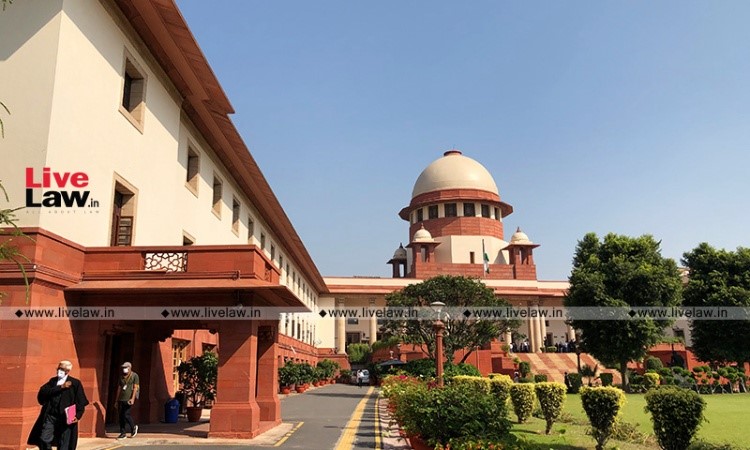Description

Copyright infringement not intended
Picture Courtesy: https://www.livelaw.in/top-stories/supreme-court-forcible-dispossession-human-constitutional-right-property-sukh-dutt-ratra-vs-state-of-himachal-pradesh-2022-livelaw-sc-347-195983
Context: The recent judgement by the Supreme Court of India regarding the protection of private property rights and the compulsory acquisition process provides a significant clarification on the legal framework surrounding property rights in the country.
Background and Legal Context
- The judgement emphasises the importance of protecting the right to private property, which is enshrined as a constitutional right.
- Despite the omission of the right to property as a fundamental right through the 44th Constitutional Amendment, Article 300A was inserted to safeguard individuals from arbitrary deprivation of property.
Key Rulings and Observations
- The court highlights that compulsory acquisition without following proper procedures and without providing fair compensation is unconstitutional.
- The court emphasises that the mere presence of legislation empowering the state to acquire property is not sufficient; proper procedures must be established and followed.
- The judgement highlights that the phrase "authority of law" in Article 300A extends beyond the power of eminent domain, encompassing the necessity for adherence to legal procedures.
Procedural Rights of Private Citizens
The court listed seven fundamental procedural rights that private citizens are entitled to before their property can be compulsorily acquired by the state:
- Right to notice: The state must inform the individual of its intent to acquire their property.
- Right to be heard: Individuals have the right to present objections to the acquisition, and the state must consider these objections.
- Right to a reasoned decision: The state must provide a clear explanation for its decision to acquire the property.
- Demonstration of public purpose: The state must demonstrate that the acquisition is solely for a public purpose.
- Right to fair compensation: Individuals are entitled to receive fair and reasonable compensation for their property.
- Efficient process: The state must conduct the acquisition process efficiently and within prescribed timelines.
- Conclusion of proceedings: The acquisition process should culminate in the actual physical possession of the land by the state.

Implications and Conclusion
- The judgement highlights the importance of upholding procedural fairness and transparency in compulsory acquisition processes.
- It serves as a significant safeguard against arbitrary state action and ensures that individuals' property rights are respected and protected.
- By clarifying the duties of the government in the acquisition process, the judgement reinforces the rule of law and the principles of justice and fairness in property rights disputes.
Evolution of the Right to Property under the Constitution of India
- Initially recognized as a fundamental right under Article 19(1)(f) and Article 31.
- 1st Amendment (1951): Amended Article 19(1)(f) and Article 31 to allow restrictions on the right to property in the interest of the general public. Aimed at agrarian reforms and addressing social inequalities.
- 44th Amendment (1978):
- Abolished the fundamental right to property altogether.
- Omitted Article 19(1)(f) and Article 31, replacing them with Article 300-A.
- Recognized the right to property as a legal right rather than a fundamental right.
- Emphasised that the right to property is not absolute and can be regulated by law.
- Current Status (Article 300-A): States that no person shall be deprived of property save by authority of law. Emphasises regulation of the right to property by law.
|
Landmark Cases Related to Right to Property
●A K Gopalan v/s State of Madras (1950): Upheld the constitutionality of the Madras Maintenance of Public Order Act, 1949. Addressed the conflict between the right to property and the state's power to regulate it.
●Kesavananda Bharati v/s State of Kerala (1973): Established the "basic structure doctrine," asserting that while Parliament can amend the Constitution, it cannot alter its basic structure. Indirectly influenced the subsequent amendment abolishing the fundamental right to property.
●Minerva Mills Ltd. v/s Union of India (1980): Struck down parts of the 42nd Amendment Act, 1976, which gave Parliament extensive power to amend the Constitution. Upheld the abolition of the fundamental right to property but affirmed its status as a constitutional right.
●Jilubhai Nanbhai Khachar v/s State of Gujarat (1995): Held that the Right to Property is not a part of the Basic Structure Doctrine of the Constitution. Affirmed the legal status of the right to property and its subject to regulation by law.
|
Conclusion
- The Supreme Court's ruling provides essential guidance on the legal standards and procedures governing the compulsory acquisition of private property, reaffirming the importance of protecting property rights within the framework of the Indian Constitution.
Must Read Articles:
ARTICLE 31 C
Source:
The Hindu
|
PRACTICE QUESTION
Q. Consider the following statements:
1. The 44th Constitutional Amendment downgraded the right to property from a fundamental right to a legal right in India.
2. Article 300A of the Indian Constitution states that no person shall be deprived of their property save by authority of law, which implies acquisition for public use.
Select the correct answer using the codes given below:
A) 1 only
B) 2 only
C) Both 1 and 2
D) None
Answer: C
|










